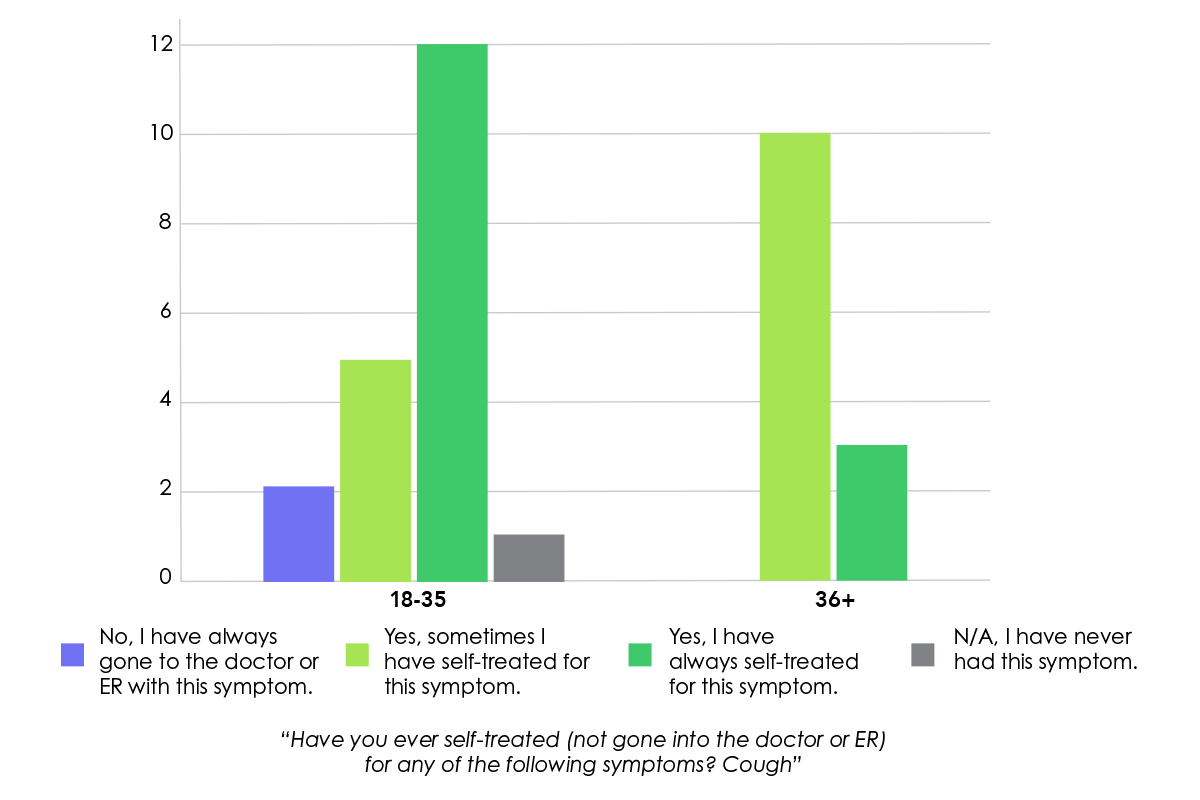| Highest-to-Lowest Ranked Features for Both Personas |
| Symptom Diary |
Keeps track of current and past symptoms including their severity, frequency and duration |
High
| High
| High
| Both
|
| Virtual Visit |
A secure, real-time video visit with a healthcare provider |
High
| High
| High
| Both
|
| Image Sharing |
Users can upload photos of their own physical symptoms so that the doctor can examine them to provide a better diagnosis |
High
| High
| High
| Both
|
| Message Center |
A place where patients can ask questions or request a callback or visit asynchronously |
High
| High
| High
| Both
|
| Alerts for Emergency Situations |
Provides a warning to users about symptoms that indicate a potentially life-threatening emergency. Alerts user about the best action to take (e.g. ER or Ambulance) |
High
| High
| High
| Both
|
| Chat Feature |
A way to interact with a medical professional in real-time via text chat |
High
| High
| High
| Both
|
| Health Data Sharing |
Allows instant transmission and two-way communication between patient and provider using an On-Demand Provider link to enable customized advice both in real-time and asynchronously |
High
| High
| High
| Both
|
| Peer Forum |
An online community of laypeople sharing information/experiences about symptoms and/or conditions. Sometimes they are currently experiencing the symptoms. Other times they have experienced them in the past |
High
| High
| High
| Both
|
| Thumbprint Sign-In |
Eliminates the need to remember a password |
High
| Medium
| Medium
| Both
|
| Thermometer |
Uses cell phone temperature sensor to check body temperature |
Medium
| High
| Medium
| Both
|
| Voice-User Interface |
Minimizes time and energy exerted to get desired information |
Medium
| Medium
| High
| Both
|
| Health and Wellness |
Additional information suitable for consumption outside of the self-triage process. Includes general health information, preventive care, nutrition
|
Low
| Medium
| High
| Both
|
| Virtual Stethoscope |
Plugs into a smartphone or tablet to monitor heart and lung sounds during a virtual visit |
Low
| Medium
| Low
| Both
|
| Highest-to-Lowest Ranked Features for "Busy Brianna" Persona |
| Assisted Self-Triage |
A recommendation of what course of action to take after a condition has been narrowed down |
High
| High
| High
| Brianna
|
| Intelligent Symptom Educator |
A quiz taken by the user that utilizes conditional logic in order to provide the most likely possible conditions based on the symptoms entered and pre-populated personal health history |
High
| High
| High
| Brianna
|
| Conditions Ranked by Likelihood |
A visual representation of the order ranking of most likely conditions |
High
| High
| High
| Brianna
|
| Guidance Navigator |
Recommends courses of action for when to seek guidance from providers or how to perform self-care |
High
| High
| High
| Brianna
|
| Verification Badges for Sources |
A visual representation of a source’s credentials (e.g. research study) |
High
| High
| High
| Brianna
|
| Reminder to Take Action |
If a user reports having a symptom that would be serious if it were to persist for one week or more, the user would receive an alert at the one week mark to take action |
High
| High
| High
| Brianna
|
| Images |
Photos of certain physical symptoms for user comparison |
High
| High
| High
| Brianna
|
| Symptom Icon Buttons |
Avoids the need to type in symptoms |
Medium
| High
| High
| Brianna
|
| Highest-to-Lowest Ranked Features for "Sandeep the Seeker" Persona |
| Verification Badges for Doctors |
A visual representation of a source or doctor’s credentials (e.g. board certified) |
High
| High
| High
| Sandeep
|
| After Visit Follow-Up |
Patients can view their doctor’s summary and notes for a recap of their visit |
High
| High
| Medium
| Sandeep
|
| Lab Results |
Patients have access to their current and past lab results. Includes completion status indicator and abnormal status indicator |
High
| High
| Medium
| Sandeep
|
| Personal and Family Health History |
Medical Records, PCP and Insurance provider saved to user’s profile and pre populated into fields throughout the portal as needed |
High
| High
| Medium
| Sandeep
|
| Request Prescription Refills |
Within the medication list a user can request a refill from their doctor or pharmacy |
High
| High
| Medium
| Sandeep
|
| Facility Wait Times |
Predicts the wait time to be seen at a walk-in clinic or ER |
High
| High
| Low
| Sandeep
|
| Find Nearest Facility |
Map and list of healthcare providers/facilities by distance, type, and insurance. Includes contact information, estimated wait times, GPS directions and ETA
|
High
| Medium
| High
| Sandeep
|
| Medication List |
A list of currently prescribed medications including side effects, drug interactions and dosing instructions. This list is automatically updated when a new medication is prescribed
|
Medium
| High
| Medium
| Sandeep
|


















